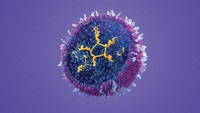Advertisement
Grab your lab coat. Let's get started
Welcome!
Welcome!
Create an account below to get 6 C&EN articles per month, receive newsletters and more - all free.
It seems this is your first time logging in online. Please enter the following information to continue.
As an ACS member you automatically get access to this site. All we need is few more details to create your reading experience.
Not you? Sign in with a different account.
Not you? Sign in with a different account.
ERROR 1
ERROR 1
ERROR 2
ERROR 2
ERROR 2
ERROR 2
ERROR 2
Password and Confirm password must match.
If you have an ACS member number, please enter it here so we can link this account to your membership. (optional)
ERROR 2
ACS values your privacy. By submitting your information, you are gaining access to C&EN and subscribing to our weekly newsletter. We use the information you provide to make your reading experience better, and we will never sell your data to third party members.
RNA
Strand Therapeutics raises additional capital to series A financing
The company pioneers logic-based mRNA circuitry for a more controlled drug delivery
by Shi En Kim
November 28, 2022

Strand Therapeutics has added to its series A funding from last year, bringing the total to $97 million. The messenger RNA (mRNA) therapeutics company is gearing up to bring its lead drug candidate, which treats cancer, into the clinic next year.
mRNA technology has boomed since its debut use in COVID-19 vaccines. The mRNA cargo is packaged in lipid nanoparticles, which circulate throughout the body and induce systemic immunity. But for other potential applications, one challenge is to deliver mRNA to specific tissues where an encoded therapeutic protein is needed.
Strand believes it has just the solution, building on research from Ron Weiss’s lab at the Massachusetts Institute of Technology. The company has solved the problem by controlling where the protein is expressed. Flanking the protein-encoding sequence on the same mRNA strand are instructions that dictate the location and timing of mRNA translation. The strategy is a trick borrowed from natural DNA and RNA in living organisms, which have similar mechanisms that regulate when, where, and which genes are expressed.
“I care less about where the messenger RNA goes, and I care more about where it’s expressed,” says Jake Becraft, Strand’s CEO and cofounder. The benefit of this strategy is a concentration of the therapeutic proteins where they are needed, which also makes the approach safer.
In the case of Strand’s lead anticancer treatment, the mRNA sequence contains elements that only switch translation on in the presence of microRNA biomarkers around tumors. Any mRNA elsewhere in the body will degrade without undergoing translation. “We’re at a stage where we believe that you can systemically deliver messenger RNA using a nanoparticle and you can get sufficient amounts of RNA delivered to the tumor,” says Tasuku Kitada, another cofounder of Strand and its president and head of R&D. “When we started the company, if you asked most people, they would think that was probably not possible.”
Strand’s drug encodes for cytokines, signaling molecules that can rouse the body’s immune defenses against cancer. Since last year, the company has licensed their technology to Beijing-based biotech BeiGene, which will collaborate with Strand to develop and commercialize the platform for treating solid tumors.





Join the conversation
Contact the reporter
Submit a Letter to the Editor for publication
Engage with us on Twitter